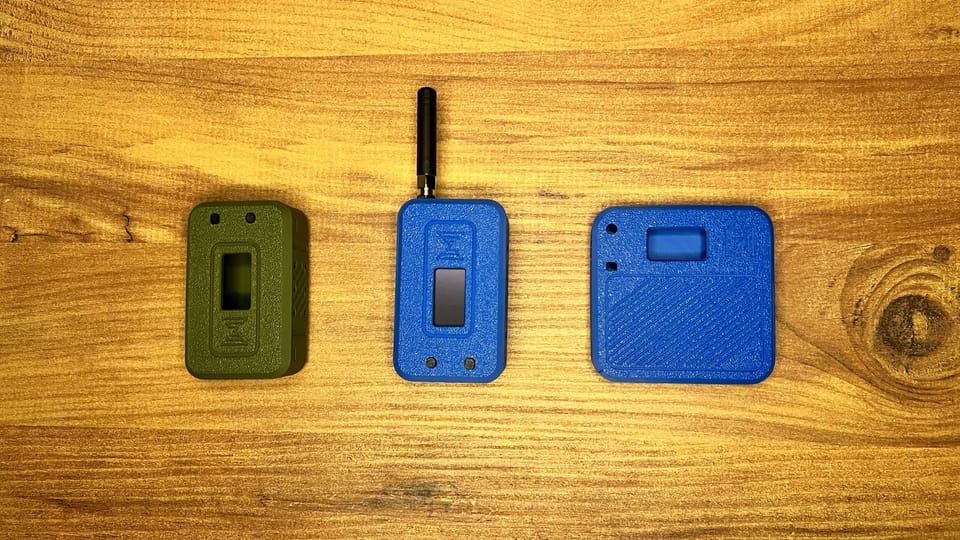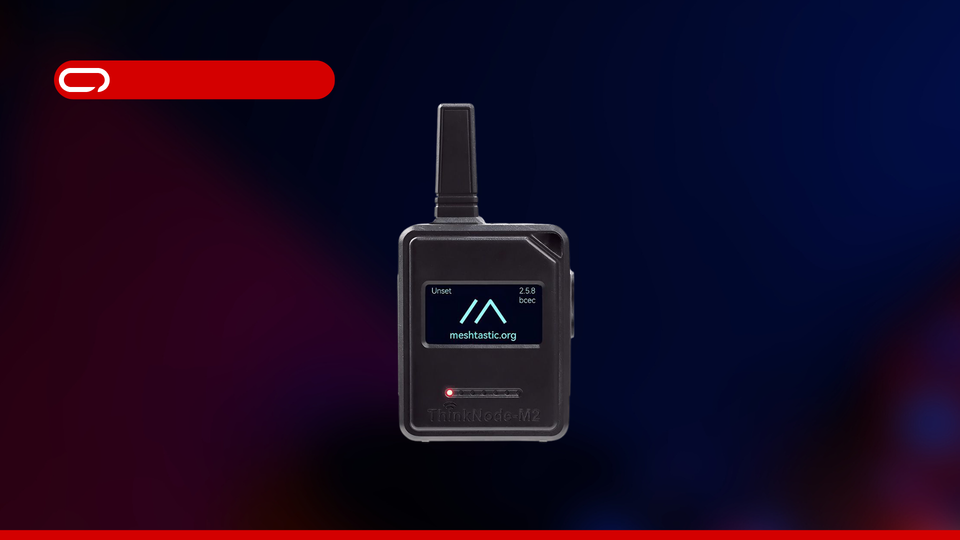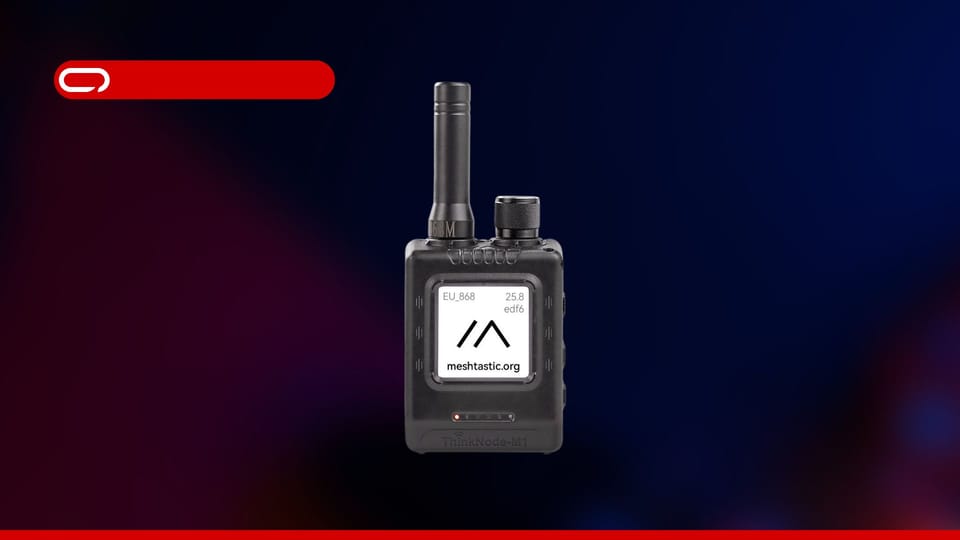WisMesh Board ONE Pocket: The Modular Meshtastic Handheld With Potential
The WisMesh Board ONE Pocket is a premium Meshtastic handheld with great build quality, modular expansion, and a larger screen. While it’s well-designed, its high price and average battery life may push budget-conscious users toward more affordable alternatives.
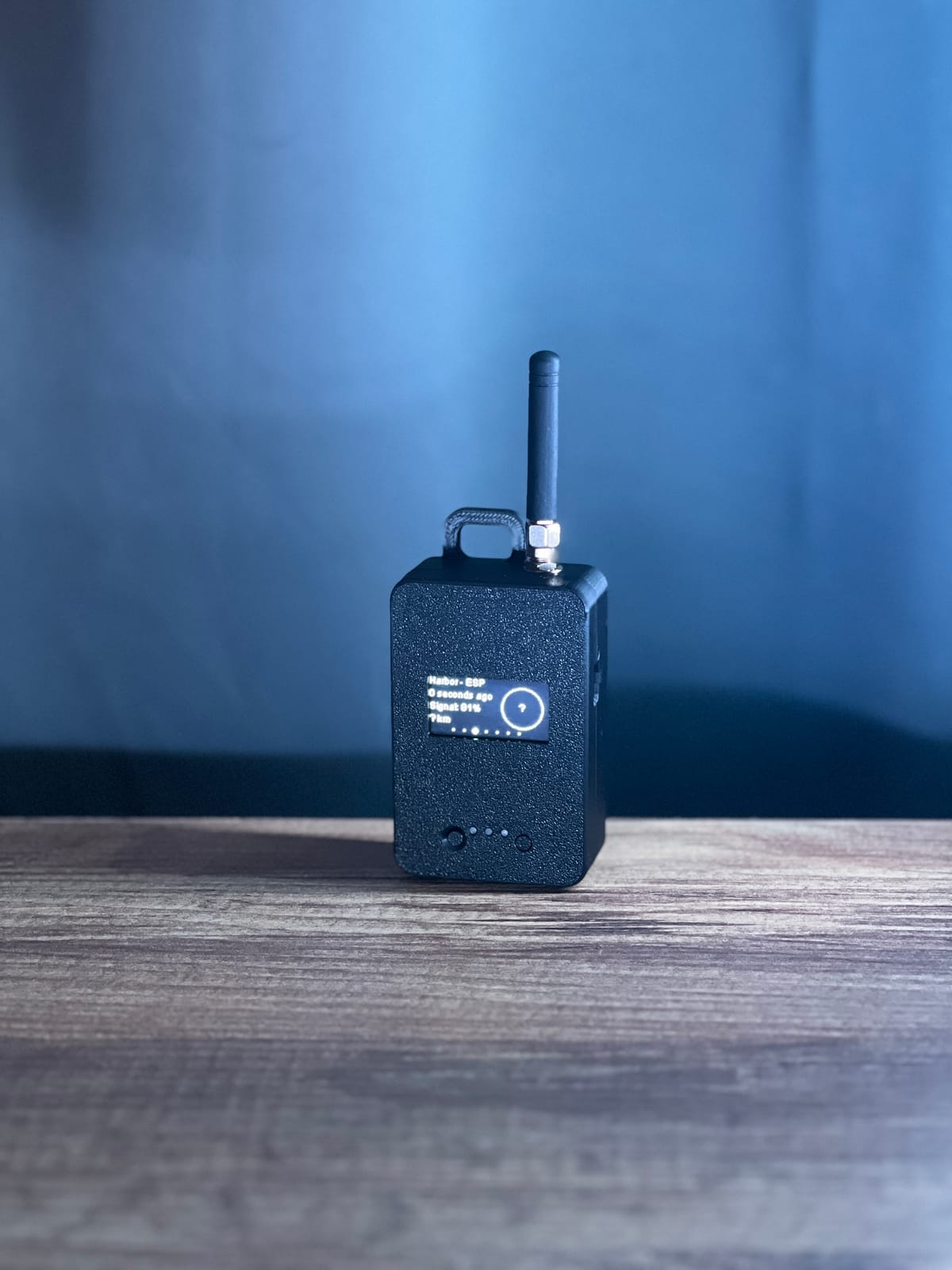
If you're involved with the Meshtastic community, you know that finding the perfect handheld device that combines flexibility, durability, and expandability isn't always straightforward. The WisMesh Board ONE Pocket by RAK Wireless enters the market as a versatile solution with some unique features—most notably, its modular expansion capabilities. Based on the impressive WisMesh Board ONE (which we'll review separately—spoiler: it's a killer solar node), this pocket version packages core functionality into a handheld form factor with some interesting extras.
Unboxing and Initial Impressions
The unboxing experience was genuinely pleasant. RAK Wireless clearly cares about customer experience from the first interaction, with everything arriving securely packaged in a well-presented box. Inside you'll find:
- 1 WisMesh Board ONE Pocket device
- 1 LoRa antenna
- 1 USB cable of surprisingly good quality
The device itself feels substantial in hand, with a build quality that immediately stands out compared to many DIY-adjacent Meshtastic options on the market.
Features Overview
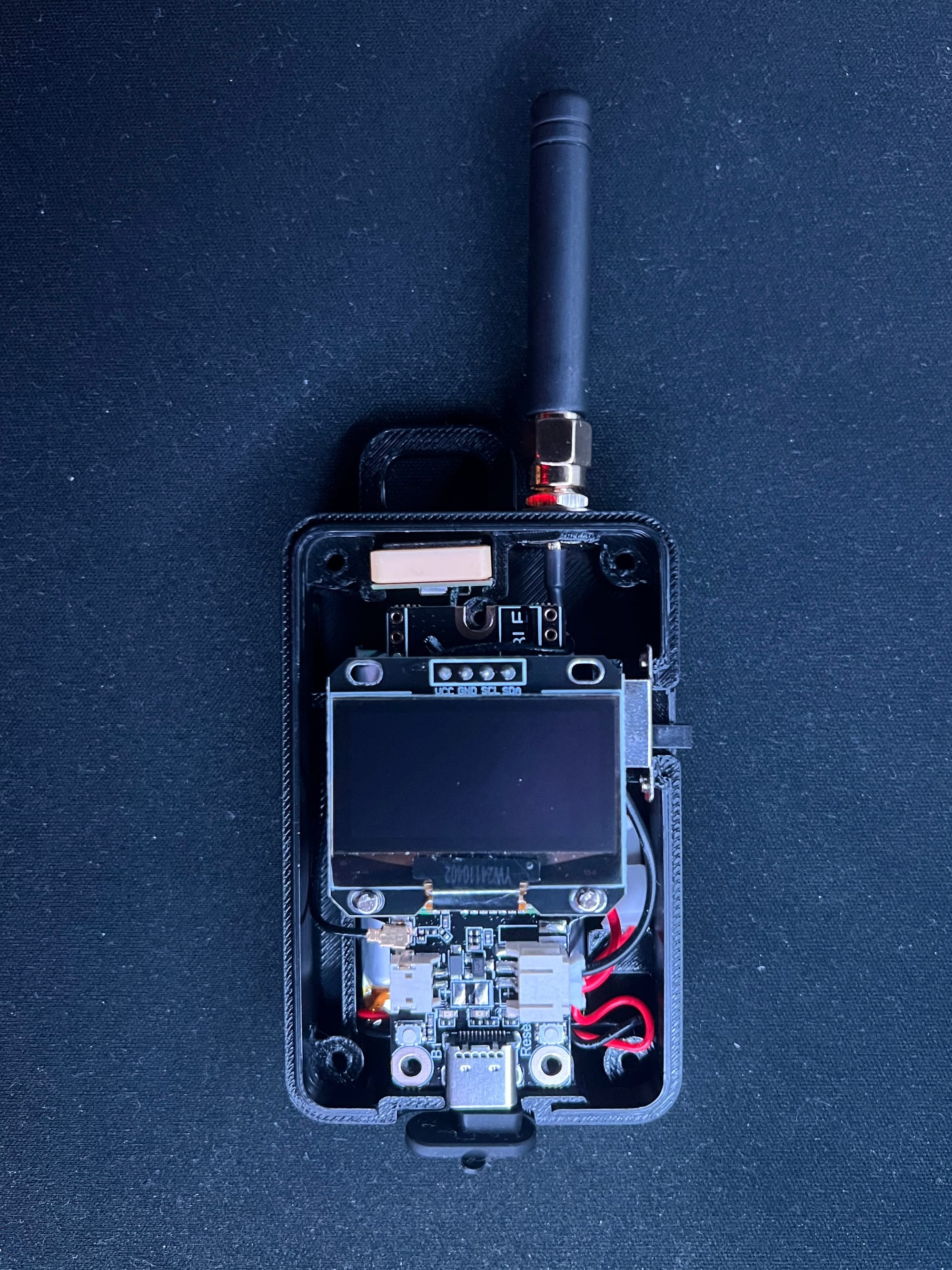
The WisMesh Board ONE Pocket comes with several notable features that differentiate it from typical Meshtastic handhelds:
- OLED 1.3" display - noticeably larger than the common 0.96" screens found on most DIY Meshtastic devices
- 1 WisBlock sensor slot - important note: in the GPS version, this slot is already occupied by the GPS module
- Built-in BMS (Battery Management System)
- Solar connector - potentially useful if you want to repurpose it, though I don't see much reason since the bare board itself is much cheaper
- Exposed GPIO pins - for DIY sensor connections
- External SMA connector - for antenna upgrades
The combination of these features makes it stand out from basic Meshtastic nodes, particularly with its larger display and potential expandability (in the non-GPS version).
Flashing the Firmware
The device comes preflashed with Meshtastic version 2.5.20, but if you want to update it, here's the process:
Erase the Existing Firmware:
- Navigate to the Meshtastic Web Flasher.
- Select RAK WisBlock 4631 (yeah, I know it's the old board but it works) from the device options.
- Click on the trash symbol next to the flash button to erase the existing firmware.
- You'll need to enter DFU mode (Device Firmware Update mode) to proceed.
Entering DFU Mode:
- Option one: Double press the button on the right (the one used for reset) and a USB drive should show up on your computer
- Option two: Click on Enter DFU Mode (After Clicking on Flash and Continue), select the correct COM Port, then click Connect.
Erase the Flash in DFU Mode:
- Once in DFU mode, the WisMesh Board ONE Pocket will appear as a drive on your computer.
- Download the Flash Erase UF2 file and copy it to the DFU drive. After transferring, the drive will disappear.
- Once the device is done rebooting, go back to the web flasher and click on Open Serial Monitor, select the correct COM Port, then click Connect.
- Give it a couple seconds and it should say done once it is done formatting.
Flashing the New Firmware:
- After erasing the existing firmware, return to the Web Flasher and choose the latest firmware version available.
- Select Flash, and you will need to enter DFU mode again (repeat the previous step).
- Once in DFU mode, download or copy the UF2 file for the new firmware onto the DFU drive.
- The device will automatically reboot once the transfer is complete and will start running the new firmware.
The process is straightforward once you know the steps, though having to select an older board model feels like an oversight that could be addressed in future updates.
Performance
Battery Life: Room for Improvement

Honestly, the battery performance was not that great. It lasted around a day with GPS on and screen off with very minimal usage. Probably with GPS off it will last a bit longer, but for a dedicated handheld device, I expected better battery performance. This is especially disappointing when comparing to some alternatives on the market that offer multi-day battery life with similar functionality.
Range & Connectivity: Upgradable but Underwhelming Out of Box
The range with the included antenna is nowhere near something like the T1000-E. However, unlike the T1000-E, you can upgrade the antenna on this device, which is a significant advantage for those who want to maximize range. With this price tag though, they should have included at least a decent antenna out of the box instead of forcing users to upgrade for better performance.
In my field testing, the stock antenna performed adequately in urban environments but falls short in areas with significant obstacles or longer distances.
This becomes particularly noticeable when directly comparing to purpose-built units like the T1000-E, which consistently outperformed the WisMesh with its stock configuration.
I got around 500m to 600m from the stock antenna while easily getting 1.8KM on the same environment from the SenseCap T1000E.
Screen & Build Quality: A Clear Strength
The screen is definitely a little bigger than what we're used to seeing on most DIY Meshtastic devices (larger than the common 0.96" OLED), and it's a nice feature to be able to see your messages clearly. The build quality is really, really good - the 3D printed case is well-made, and if you take it apart, you can see how much they really cared about putting this together properly.
Text is crisp and readable even in bright conditions, and the larger screen size makes navigating menus and reading messages significantly more comfortable than on smaller displays typical of DIY Meshtastic devices.
Usability & Experience
The device is really well made and thoughtfully designed. Even though the WisMesh Board ONE bare board doesn't have a power switch, they managed to incorporate one into this handheld version for turning the device on and off. The buttons are easy to access - one for reset and another for cycling through screens.
The LEDs are also a nice feature that indicates what's happening with the device: when it's charging, when it's running, and when it's in New message or BLE/DFU mode.
The USB-C port has a rubber cover to prevent dust from getting inside, which is a nice touch for durability.
I just wish it had a buzzer. For a handheld device in today's market, it feels like a must-have feature that's missing. This omission is particularly noticeable when using the device in environments where you might not be able to constantly watch the screen for notifications.
Expandability: A Critical Distinction Between Models
Here's where we need to clarify an important point: the WisMesh Board ONE Pocket comes in two versions, and their expandability differs significantly:
- GPS Version ($65.97): The WisBlock sensor slot is already occupied by the GPS module. This means if you want to add any other sensor, you would need to remove the GPS module first, essentially forcing you to choose between GPS functionality or a different sensor.
- Non-GPS Version ($46.97): This version has the WisBlock sensor slot available for your choice of sensor.
So if you want both GPS functionality and additional sensors, you're out of luck with this device. This severely limits the expandability claims for the GPS version.
If you do have the non-GPS version (or are willing to remove the GPS module), you'll need to take apart the device and remove the board from the case since the slot is on the back. Once you have access to the slot, it's super easy and clean to use (honestly better than anything else on the market like Seeed Studio's Grove connectors). It's a simple plug-and-screw design - one screw secures it in place. I love it!
I also love that you can easily take it apart to change the battery or modify it however you want. There's no glue or anything making disassembly difficult!
While the expandability options are somewhat limited by the need to disassemble the device and the single sensor slot (which is occupied in the GPS version), the non-GPS version still offers more flexibility than most competing devices on the market.
Pricing: The Sticking Point
Here's where we need to pause for a while. $65.97 with GPS and $46.97 without GPS seems a little steep (especially the GPS premium!). YES, there's nothing with these exact features on the market, but the alternatives are way cheaper:
- The T1000-E is $40 - yes, it has no customizability and a much smaller battery, but it's water-resistant, has molded plastic, includes a temperature sensor and buzzer, and offers better range out of the box.
- The ThinkNode-M1 (which we'll review soon) is a new device from Elecrow that also costs $40. Again, there's no customizability unless you want to DIY, but you can upgrade the antenna, it has a bigger battery, includes GPS and a buzzer!
- The T-Echo again can't be customized with sensors unless you want to DIY, and it has a smaller battery, but some versions come with a BME280 sensor (temperature, humidity, and pressure) for even a couple bucks cheaper!
This is why it was hard for us to make a clear recommendation. Almost all RAK Wireless products are slightly pricier, but they typically find and fill gaps in the market. The board itself offers really good value, but I think they added a bit too much margin for the ready-to-use version.
So with this price tag, who should buy it? Consider it if you need:
- A budget-friendly(ish) option
- Modular expansion (but remember, only in the non-GPS version)
- Solar connectivity options
- Good build quality
Here's my note to RAK: bring the cost down, even if it means removing all the solar technology. I know the solar connection and BMS required significant R&D investment, but for a handheld device, they add unnecessary cost. You should do the math on how to build a better-priced handheld - either make a custom PCB specifically for handheld use without the solar features, or simply reduce your price.
Final Thoughts: A Solid But Expensive Meshtastic Option
The WisMesh Board ONE Pocket delivers excellent build quality, a thoughtful design with useful indicators, and a larger screen that will appeal to Meshtastic enthusiasts. The easy disassembly is a definite highlight. However, the battery performance, antenna limitations, GPS/sensor slot conflict, and premium price point make it difficult to recommend unreservedly in a competitive market with more affordable alternatives.
If you value the specific combination of features it offers and are willing to pay extra for build quality and the larger screen, the WisMesh Board ONE Pocket could be an excellent addition to your Meshtastic network. For those wanting both GPS and additional sensors, you'll need to look elsewhere or consider buying two devices (one with GPS, one without). Otherwise, you might want to consider the alternatives or wait for potential price adjustments.

